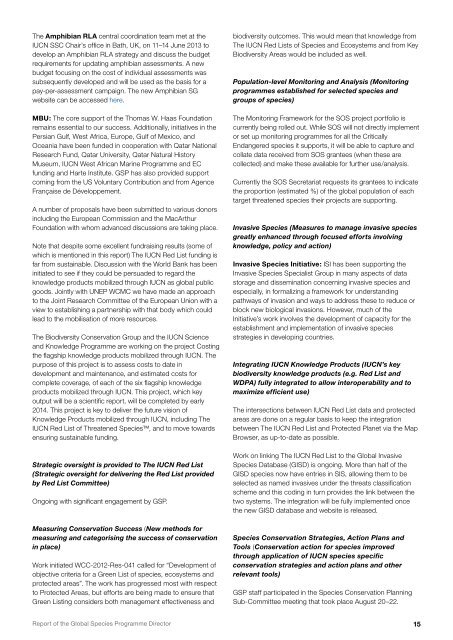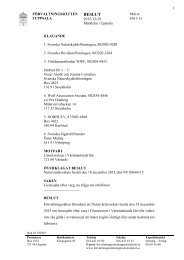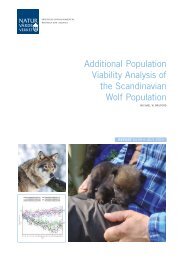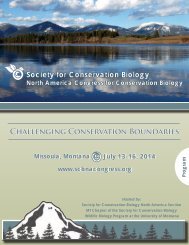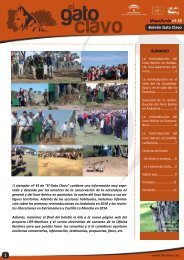1oC3Dbk
1oC3Dbk
1oC3Dbk
You also want an ePaper? Increase the reach of your titles
YUMPU automatically turns print PDFs into web optimized ePapers that Google loves.
The Amphibian RLA central coordination team met at the<br />
IUCN SSC Chair’s office in Bath, UK, on 11–14 June 2013 to<br />
develop an Amphibian RLA strategy and discuss the budget<br />
requirements for updating amphibian assessments. A new<br />
budget focusing on the cost of individual assessments was<br />
subsequently developed and will be used as the basis for a<br />
pay-per-assessment campaign. The new Amphibian SG<br />
website can be accessed here.<br />
MBU: The core support of the Thomas W. Haas Foundation<br />
remains essential to our success. Additionally, initiatives in the<br />
Persian Gulf, West Africa, Europe, Gulf of Mexico, and<br />
Oceania have been funded in cooperation with Qatar National<br />
Research Fund, Qatar University, Qatar Natural History<br />
Museum, IUCN West African Marine Programme and EC<br />
funding and Harte Institute. GSP has also provided support<br />
coming from the US Voluntary Contribution and from Agence<br />
Française de Développement.<br />
A number of proposals have been submitted to various donors<br />
including the European Commission and the MacArthur<br />
Foundation with whom advanced discussions are taking place.<br />
Note that despite some excellent fundraising results (some of<br />
which is mentioned in this report) The IUCN Red List funding is<br />
far from sustainable. Discussion with the World Bank has been<br />
initiated to see if they could be persuaded to regard the<br />
knowledge products mobilized through IUCN as global public<br />
goods. Jointly with UNEP WCMC we have made an approach<br />
to the Joint Research Committee of the European Union with a<br />
view to establishing a partnership with that body which could<br />
lead to the mobilisation of more resources.<br />
The Biodiversity Conservation Group and the IUCN Science<br />
and Knowledge Programme are working on the project Costing<br />
the flagship knowledge products mobilized through IUCN. The<br />
purpose of this project is to assess costs to date in<br />
development and maintenance, and estimated costs for<br />
complete coverage, of each of the six flagship knowledge<br />
products mobilized through IUCN. This project, which key<br />
output will be a scientific report, will be completed by early<br />
2014. This project is key to deliver the future vision of<br />
Knowledge Products mobilized through IUCN, including The<br />
IUCN Red List of Threatened Species, and to move towards<br />
ensuring sustainable funding.<br />
Strategic oversight is provided to The IUCN Red List<br />
(Strategic oversight for delivering the Red List provided<br />
by Red List Committee)<br />
Ongoing with significant engagement by GSP.<br />
Measuring Conservation Success (New methods for<br />
measuring and categorising the success of conservation<br />
in place)<br />
Work initiated WCC-2012-Res-041 called for “Development of<br />
objective criteria for a Green List of species, ecosystems and<br />
protected areas”. The work has progressed most with respect<br />
to Protected Areas, but efforts are being made to ensure that<br />
Green Listing considers both management effectiveness and<br />
biodiversity outcomes. This would mean that knowledge from<br />
The IUCN Red Lists of Species and Ecosystems and from Key<br />
Biodiversity Areas would be included as well.<br />
Population-level Monitoring and Analysis (Monitoring<br />
programmes established for selected species and<br />
groups of species)<br />
The Monitoring Framework for the SOS project portfolio is<br />
currently being rolled out. While SOS will not directly implement<br />
or set up monitoring programmes for all the Critically<br />
Endangered species it supports, it will be able to capture and<br />
collate data received from SOS grantees (when these are<br />
collected) and make these available for further use/analysis.<br />
Currently the SOS Secretariat requests its grantees to indicate<br />
the proportion (estimated %) of the global population of each<br />
target threatened species their projects are supporting.<br />
Invasive Species (Measures to manage invasive species<br />
greatly enhanced through focused efforts involving<br />
knowledge, policy and action)<br />
Invasive Species Initiative: ISI has been supporting the<br />
Invasive Species Specialist Group in many aspects of data<br />
storage and dissemination concerning invasive species and<br />
especially, in formalizing a framework for understanding<br />
pathways of invasion and ways to address these to reduce or<br />
block new biological invasions. However, much of the<br />
Initiative’s work involves the development of capacity for the<br />
establishment and implementation of invasive species<br />
strategies in developing countries.<br />
Integrating IUCN Knowledge Products (IUCN’s key<br />
biodiversity knowledge products (e.g. Red List and<br />
WDPA) fully integrated to allow interoperability and to<br />
maximize efficient use)<br />
The intersections between IUCN Red List data and protected<br />
areas are done on a regular basis to keep the integration<br />
between The IUCN Red List and Protected Planet via the Map<br />
Browser, as up-to-date as possible.<br />
Work on linking The IUCN Red List to the Global Invasive<br />
Species Database (GISD) is ongoing. More than half of the<br />
GISD species now have entries in SIS, allowing them to be<br />
selected as named invasives under the threats classification<br />
scheme and this coding in turn provides the link between the<br />
two systems. The integration will be fully implemented once<br />
the new GISD database and website is released.<br />
Species Conservation Strategies, Action Plans and<br />
Tools (Conservation action for species improved<br />
through application of IUCN species specific<br />
conservation strategies and action plans and other<br />
relevant tools)<br />
GSP staff participated in the Species Conservation Planning<br />
Sub-Committee meeting that took place August 20–22.<br />
Report of the Global Species Programme Director<br />
15


